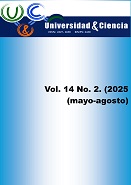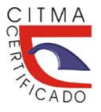Use of water and climate resources in hydrographic basins
DOI:
https://doi.org/10.5281/zenodo.15792525Keywords:
climate change, climogram, surface runoffAbstract
Introduction: Watersheds are fundamental to the hydrological cycle, biodiversity, and water supply; however, they face challenges such as climate change and overexploitation. This study analyzes the role of precipitation in local development, emphasizing the integration of climatic and hydrological variables for sustainability. Objective: To analyze water and climatic resources using tools such as the climograph and rainfall frequency analysis to improve water management and sustainability at the local level. Method: Methodologies such as the Aridity Index and hydrological simulation models were used. A climograph was developed to analyze temperature and precipitation patterns in Grua Nueva, Ciego de Avila. Results: The climograph identified two seasons: a rainy period (May-October) with 82.4 % of annual rainfall (1245.2 mm) and a dry period (November-April). The average annual temperature showed a thermal oscillation of 5.82 °C. The rainfall frequency analysis allowed for the prediction of extreme events, useful for agricultural planning and disaster prevention. The importance of capturing surface runoff for irrigation and aquifer recharge was highlighted. Conclusion: Updating hydrological studies and the use of the climograph are essential for sustainable water management. Capturing runoff and treating wastewater are key aspects to improve water availability and quality in the context of climate change. These results underscore the need to adapt water management practices to new climatic conditions.
Downloads
References
Abbaspour, K. C., Rouholahnejad, E., Vaghefi, S., Srinivasan, R., Yang, H., & Kløve, B. (2015). A continental-scale hydrology and water quality model for Europe: Calibration and uncertainty of a high-resolution large-scale SWAT model. Journal of Hydrology, 524, 733-752. https://doi.org/10.1016/j.jhydrol.2015.03.027
Alataway, A., & El Alfy, M. (2019). Rainwater harvesting and artificial groundwater recharge in arid areas: Case study in Wadi Al-Alb, Saudi Arabia. Journal of Water Resources Planning and Management, 145(1), 05018017. https://doi.org/10.1061/(ASCE)WR.1943-5452.0001009
Álvarez Sevilla, I., Brown Manrique, O., y del Cid-Colindres, E. P. (2017). Estimación de variables hidrológicas mediante modelos de regresión en la cuenca del rio Suchiate, Guatemala. Revista Ciencias Técnicas Agropecuarias, 26(3), 22-29. http://scielo.sld.cu/pdf/rcta/v26n3/rcta03317.pdf
Aranguren, M., Pérez, J., y Pérez, Y. (2015). Determinación de los índices bioclimáticos y tipo de clima para la vid en las condiciones de Jagüey Grande, Matanzas, Cuba. Centro Agricola, 42(4), 75-83.
Corrales Chaves, L. (2025). ¿Estamos perdiendo los humedales más rápido de lo que podemos restaurarlos? Revista de Ciencias Ambientales, 59(1). https://www.scielo.sa.cr/pdf/rca/v59n1/2215-3896-rca-59-01-20530.pdf
Da Casa Martín, F., Celis D’amico, F., y Echeverría Valiente, E. (2019). Metodología para elaborar una cartografía regional y aplicar estrategias bioclimáticas según la carta de Givoni. Revista hábitat sustentable, 9(2), 52-63. https://www.scielo.cl/pdf/hs/v9n2/0719-0700-hs-9-02-00052.pdf
Garg, K. K., Akuraju, V., Anantha, K. H., Singh, R., Whitbread, A. M., y Dixit, S. (2022). Identifying potential zones for rainwater harvesting interventions for sustainable intensification in the semi-arid tropics. Scientific Reports, 12(1), 3882. https://www.nature.com/articles/s41598-022-07847-4
Gudmundsson, L., Boulange, J., Do, H. X., Gosling, S. N., Grillakis, M. G., & Koutroulis, A. G. (2021). Globally observed trends in mean and extreme river flow attributed to climate change. Science, 371(6534), 1159-1162. https://doi.org/10.1126/science.aba3996
Han, J., y Singh, V. P. (2023). A review of widely used drought indices and the challenges of drought assessment under climate change. Environmental Monitoring and Assessment, 195(12), 1438. https://link.springer.com/article/10.1007/s10661-023-12062-3
Izaguirre Liviac, M. F., Drenkhan, F., & Timaná, M. E. (2024). Actual y futura disponibilidad del agua en un contexto de inseguridad hídrica en la subcuenca de Parón, cuenca del río Santa, Perú. Revista Kawsaypacha: Sociedad y Medio Ambiente, (13). http://www.scielo.org.pe/pdf/kaw/n13/2709-3689-kaw-13-A-001.pdf
José Ríos, M., Mendoza Ramírez, R., Silva Casarín, R., Simuta Champo, R., Reyes López, D., y Pascual Ramírez, F. (2018). Elementos para gestión del agua en la cuenca del lago de Zirahuén. Terra latinoamericana, 36(4), 431-439. https://www.scielo.org.mx/pdf/tl/v36n4/2395-8030-tl-36-04-431.pdf
Jullian, C., Nahuelhual, L., Mazzorana, B., y Aguayo, M. (2018). Evaluación del servicio ecosistémico de regulación hídrica ante escenarios de conservación de vegetación nativa y expansión de plantaciones forestales en el centro-sur de Chile. Bosque (Valdivia), 39(2), 277-289. https://www.scielo.cl/pdf/bosque/v39n2/0717-9200-bosque-39-02-00277.pdf
Larramendi Benítez, E. M., Millán Verdecia, G., y Plana Castell, M. A. (2021). Escasez y contaminación del agua, realidades del siglo XXI. Revista 16 de abril, 60(279), 854-854. https://rev16deabril.sld.cu/index.php/16_04/article/view/854
Millington, N., Das, S. y Simonovic, S. P. (2011). The comparison of GEV, log-Pearson type III and Gumbel distributions in the Upper Thames River watershed under global climate models. Journal of Water Resource and Protection, 3(12), 866-879. https://ir.lib.uwo.ca/cgi/viewcontent.cgi?article=1039&context=wrrr
Montroull, N. B., Saurral, R. I., Camilloni, I. A., Sörensson, A., Menendez, C., & Ruscica, R. (2013). Escenarios hidrológicos futuros en la región de los esteros del Iberá en el contexto del cambio climático. Meteorologica, 38(1), 3-19. https://www.scielo.org.ar/pdf/meteoro/v38n1/v38n1a01.pdf
Morante Carballo, F., Montalván Burbano, N., Quiñonez Barzola, X., Jaya Montalvo, M., & Carrión Mero, P. (2022). What do we know about water scarcity in semi-arid zones? A global analysis and research trends. Water, 14(17), 2685. https://www.mdpi.com/2073-4441/14/17/2685
Nazarpour, S., Gnecco, I., & Palla, A. (2023). Evaluating the effectiveness of bioretention cells for urban stormwater management: A systematic review. Water, 15(5), 913. https://www.mdpi.com/2073-4441/15/5/913
Nerantzaki, S. D., y Papalexiou, S. M. (2022). Assessing extremes in hydroclimatology: A review on probabilistic methods. Journal of Hydrology, 605, 127302. https://doi.org/10.1016/j.jhydrol.2021.127302
Nilin, J., Santos, A. A., y Nascimento, M. K. (2018). Ecotoxicology assay for the evaluation of environmental water quality in a tropical urban estuary. Anais da Academia Brasileira de Ciências, 91, 1-10. https://doi.org/10.1590/0001-3765201820180232
Salas, J. D., Obeysekera, J. y Vogel, R. M. (2018). Techniques for assessing water infrastructure for nonstationary extreme events: A review. Hydrological Sciences Journal, 63(3), 325-352. https://doi.org/10.1080/02626667.2018.1426858
Scanlon, B. R., Fakhreddine, S., Rateb, A., de Graaf, I., Famiglietti, J., Gleeson, T., ... & Zheng, C. (2023). Global water resources and the role of groundwater in a resilient water future. Nature Reviews Earth & Environment, 4(2), 87-101. https://www.nature.com/articles/s43017-022-00378-6
Vörösmarty, C. J., McIntyre, P. B., Gessner, M. O., Dudgeon, D., Prusevich, A., Green, P. ... y Davies, P. M. (2010). Global threats to human water security and river biodiversity. Nature, 467(7315), 555-561. https://doi.org/10.1038/nature09440
Wang, L., Jiao, W., MacBean, N., Rulli, M. C., Manzoni, S., Vico, G., & D’Odorico, P. (2022). Dryland productivity under a changing climate. Nature Climate Change, 12(11), 981-994. https://www.nature.com/articles/s41558-022-01499-y
Wilks, D. S. (2019). Statistical methods in the atmospheric sciences (4th ed.). Academic Press.
Downloads
Published
How to Cite
Issue
Section
License
Copyright (c) 2025 Universidad & ciencia

This work is licensed under a Creative Commons Attribution-NonCommercial-ShareAlike 4.0 International License.





















